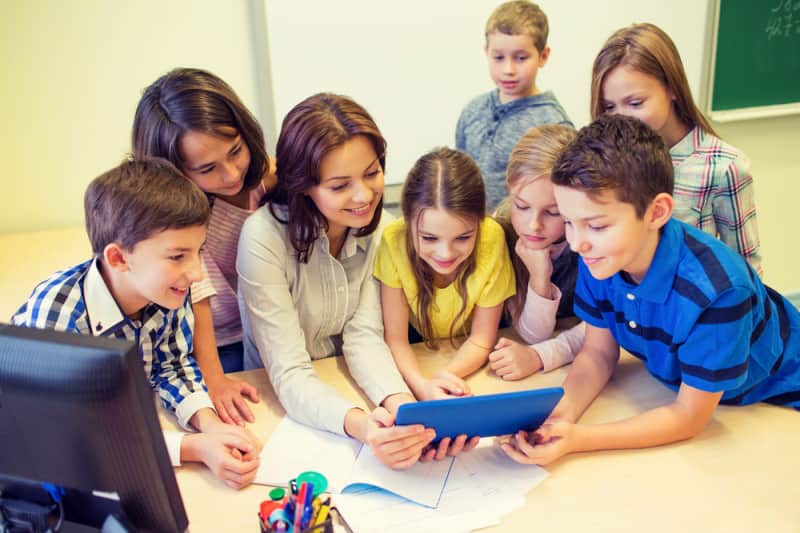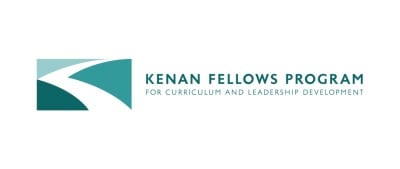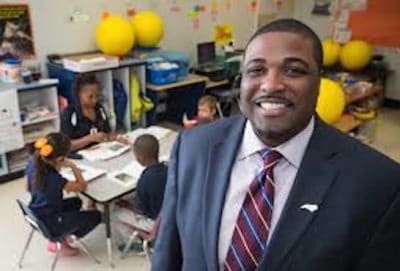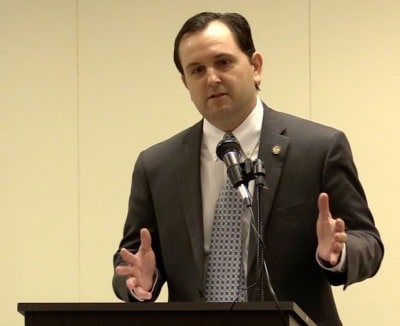
A Spanish immersion program makes full use of technology in the classroom
The thought of preparing our students for their 21st century futures conjures up a number of different ideas. There’s imparting the necessary technology skills students will need to thrive in their careers, as well as interpersonal skills such as collaboration and communication and making sure students can function in an increasingly globalized world. On that last point, my school, Shiloh Elementary School in Monroe, N.C., wondered if we were doing enough. Wouldn’t teaching fluency in a foreign language be the ultimate means to prepare students for a diverse and multicultural world?
Since 2012, Shiloh has been very proud to have hosted what we call the SPLASH Spanish immersion program. Currently, we have one immersion class — taught full-time in Spanish, with the goal of “immersing” or teaching Spanish to speakers of other languages, like English — in each of our Kindergarten through third-grade classrooms. Our school has embraced this wonderful program, and our dedicated teachers have come to us from various Spanish-speaking countries, including Colombia, Venezuela, Honduras, Chile, and Spain through VIF International Education, a company located nearby in Chapel Hill, N.C. that has provided us the means for our immersion program. These classes are effectively preparing our students to become successful, responsible, and confident bilingual students, and the use of technology in each of these immersion classrooms has truly enhanced the curriculum.
Each immersion classroom has some student computers and either a Dell short-throw projector or a Promethean Board. Our students are able to embrace and interact with the technology on a daily basis. Our immersion teachers state that these interactive tools empower them to have successful teaching environments where the bilingual capabilities of their students are fully realized. For example, SPLASH teachers use educational programs and lessons that allow their students to embrace new topics and exciting facts in a 21st century manner. Teachers view their students as “digital citizens” who are being given the tools each day to interact in the modern world.
Technology in our immersion classes helps to facilitate the design of the teachers’ lessons, and also allows our students to develop communication skills in a fun and interesting way. The internet provides resources for our students to learn a second language, and it also facilitates the teachers’ processes of evaluation. For example, students may participate in interactive reading activities where they record their own voice to practice fluency. There are also games and videos to enhance and follow up on what is being taught in the classroom and help students develop effective communication skills in a fun and interesting way.
Global learners
By and large, we’ve found the use of technology increases students’ motivation and concentration, and it engages them in meaningful, relevant, and intellectually stimulating work. Using the internet, students are able to research, organize, and share information with the teacher and each other. Students in our third-grade immersion class are using the internet to research important information about a person from Latin America so they can write a biography. In another instance involving a math lesson, students completed an interactive math problem on a flipchart with guided practice from the teacher. Then, students practiced the math concept using a link in their Google Classroom.
Shiloh’s SPLASH students appear to be very motivated to learn each day because their teachers offer those activities in which they interact with computers, the internet, digital cameras, and other devices. The use of Skype allows students the opportunity to virtually interact with Spanish-speaking people from around the world. This virtual environment allows them to see how people look, talk, behave, and interact in those countries. More specifically, one of our SPLASH classes communicated with a woman in China. She told the students about her culture and showed them her home. Our students then followed up with the Skype session by visiting websites to read and view photographs related to the Chinese culture.
Beyond the classroom, technology in our immersion classes is used to communicate with parents through classroom websites, which offer information about events, assignments, and strategies to assist bilingual students at home. Teacher websites also contain links to educational sites and videos that students can access from home for additional practice in reading, math, and communication skills. In addition, teachers participate in professional growth activities and develop an educational network though webinars, on-line research, and the sharing of resources in a global learning community.
Shiloh Elementary’s SPLASH teachers immerse their students in 21st century and technology skills by linking their knowledge and the quality of meaningful lessons. This process helps students to notice patterns, generate arguments with explanations, give opinions, and use other higher order thinking processes to demonstrate work at higher academic achievement levels.
We’re confident our immersion program will help students in the future become more aware of the world around them without thinking about limits and borders. Our SPLASH students respect cultural differences knowing that those differences are what make people around the world unique, varied, and wonderful. Our students are learning that people do not have to “be the same” to be friends or to work and live together. The addition and use of technology in our immersion classes will help our students to be better citizens and professionals who will be more tolerant, knowledgeable, and prepared for a fast-moving and digital world.
This article was originally published at eSchool News on January 15, 2016. It is reprinted here with the author’s permission.



